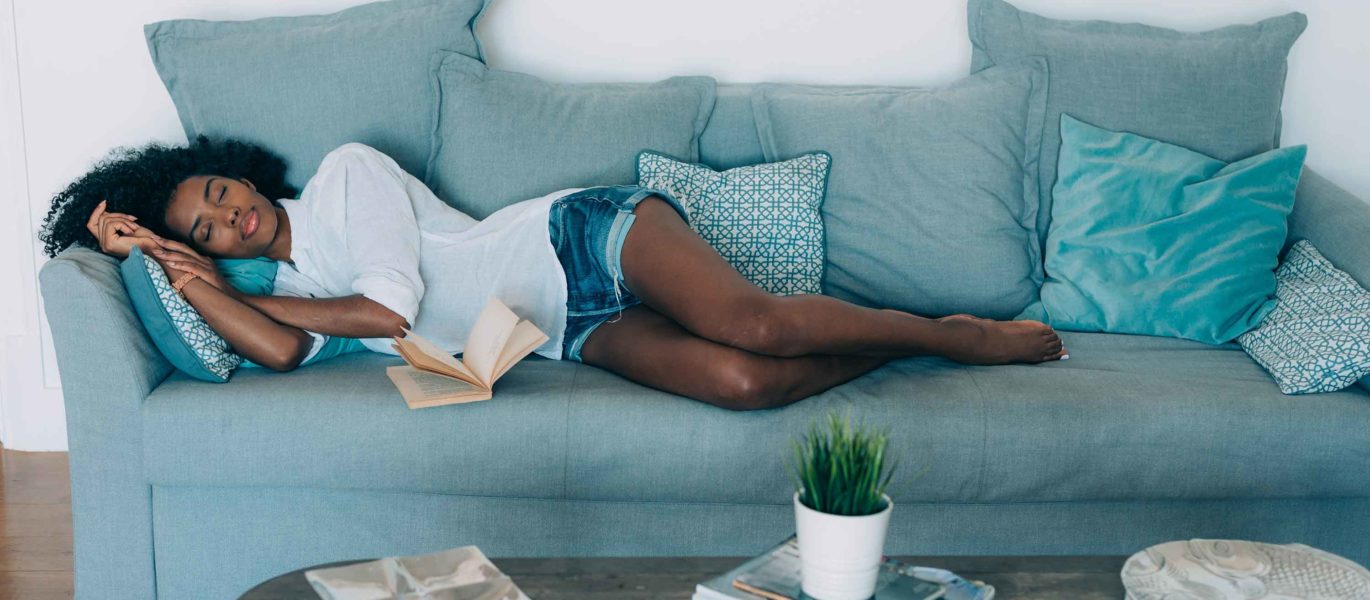Having a hard time getting through the day without that fourth cup of coffee? Brain feeling foggy, a lot? Then you’re probably among the one-third of Americans who don’t get enough sleep. According to the Sleep Foundation, roughly 41 million people in the U.S. get six hours or less of sleep a night.
No problem, right? A few hours is enough. But, are you sure? Have you ever experienced forcing your eyelids to stay open while driving home (sleep-deprived reaction-time tests mirror drunk driving)? Or, at your last check-up, did your doctor ask about your sleep habits because she knows the medical evidence linking inadequate sleep to cardiovascular disease, hypertension, diabetes, depression and obesity? The facts are not in your favor: Eight hours or more of sleep keeps your brain and your bod at peak performance.
You might not be able to nix all the reasons you aren’t getting your ZZZs — the child who wakes up sick at midnight, the boss who moves up your deadline (by a week), or the far-away friend who flies in for a business meeting and an impromptu girls’ night out. But, you probably can fit in a mid-afternoon power nap to give your sleep-deficit a quick fix. In fact, a 20-minute afternoon nap can make up for the loss of an entire hour of nighttime sleep.
Research has shown that a 10- to 20-minute nap can:
- Increase the brain’s ability to learn new facts in the hours that follow
- Help your decision making, creativity and sensory perception
- Help you be less stressed and handle frustration better (a 2015 University of Michigan study).
But, don’t overdo it. A longer nap or a nap too late in the day might make it harder for you to fall asleep or stay asleep at night. If you already have trouble sleeping, a nap will exacerbate the problem. Longer naps can also leave you with sleep inertia, that hard-to-shake groggy feeling after you wake up.
Power Nap Like a Pro
What’s the sweet spot? Experts agree that a power nap shouldn’t last more than 30 minutes. “Studies show that after a 10- to 20-minute nap the person wakes up feeling refreshed and with better concentration and better memory,” says Sanjeev Kothare, director of the Pediatric Sleep Center and Sleep Education at New York University’s Langone Medical Center.
To get the most out of a power nap, follow these tips from Dr. Sara C. Mednick, sleep researcher at the University of California, and author of “Take a Nap! Change Your Life”:
- Keep a regular nap schedule; prime nap time for most people (those with regular day-time work schedules) should fall between 1 and 3 p.m.
- Set an alarm for 30 minutes or less; don’t rely on yourself to wake up
- Dim lights, draw shades, grab a warm blanket because your body temperature drops when you sleep, loosen restrictive clothing, and find a comfortable, quiet spot — ear buds sending soothing sounds and a sleep mask might also help you doze.
If you feel like you could use a longer nap to make up for an extremely poor night’s sleep — perhaps caused by jet-lag — Mednick shares this information: A 60-minute nap might help with memorization and learning specific bits of information because it’s long enough to enter stage-two sleep, known as non-rapid eye movement (R.E.M.) sleep; a 90-minute nap will allow you to complete a full sleep cycle.
Bottom line: Naps can’t take the place of your body’s need for regular, adequate nightly sleep. But, they can help you up your game in managing a 24/7 life.



 3 min read
3 min read



